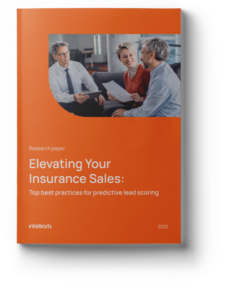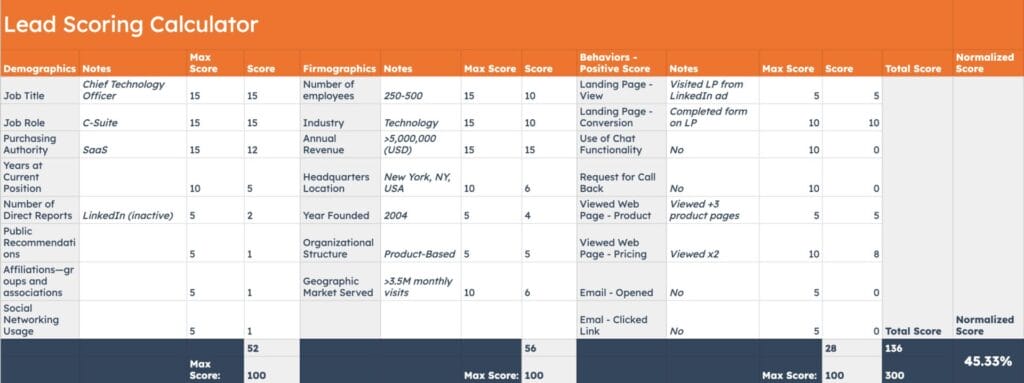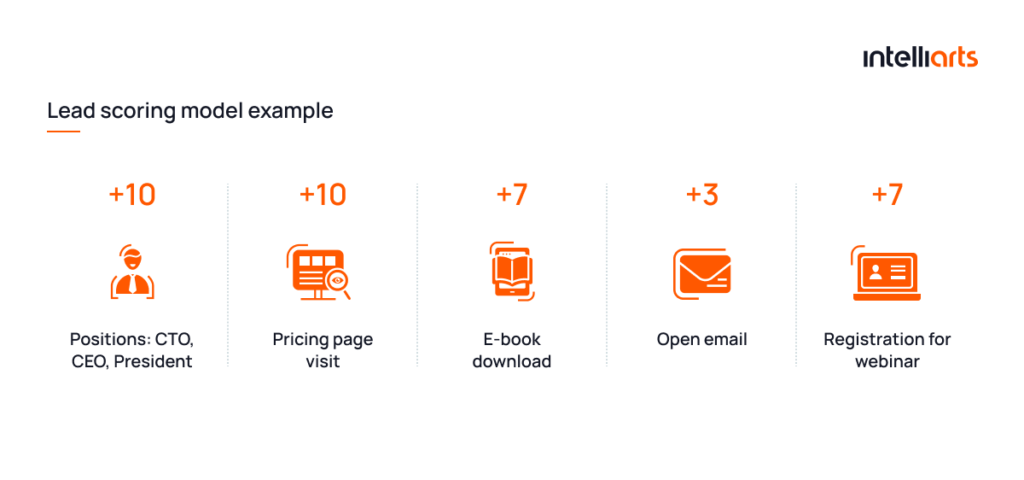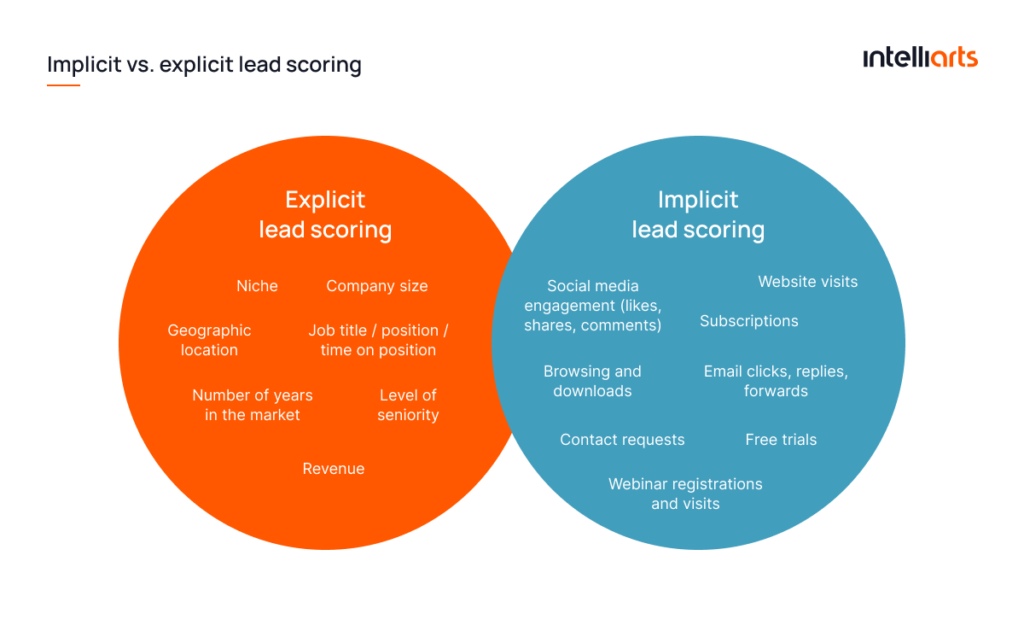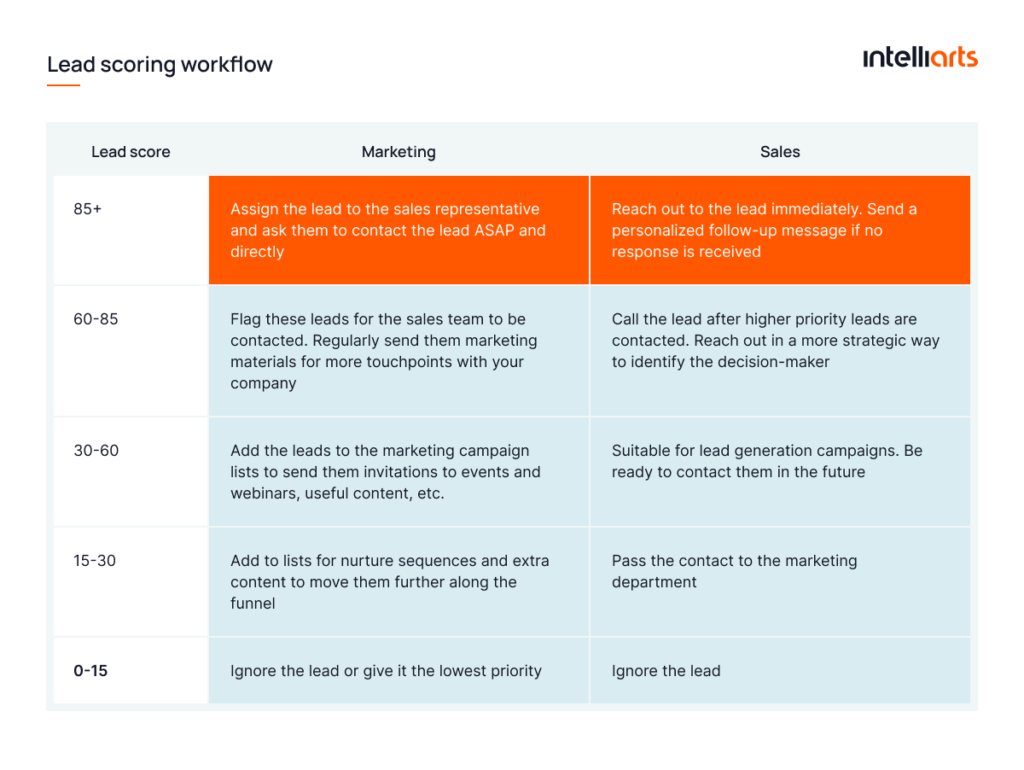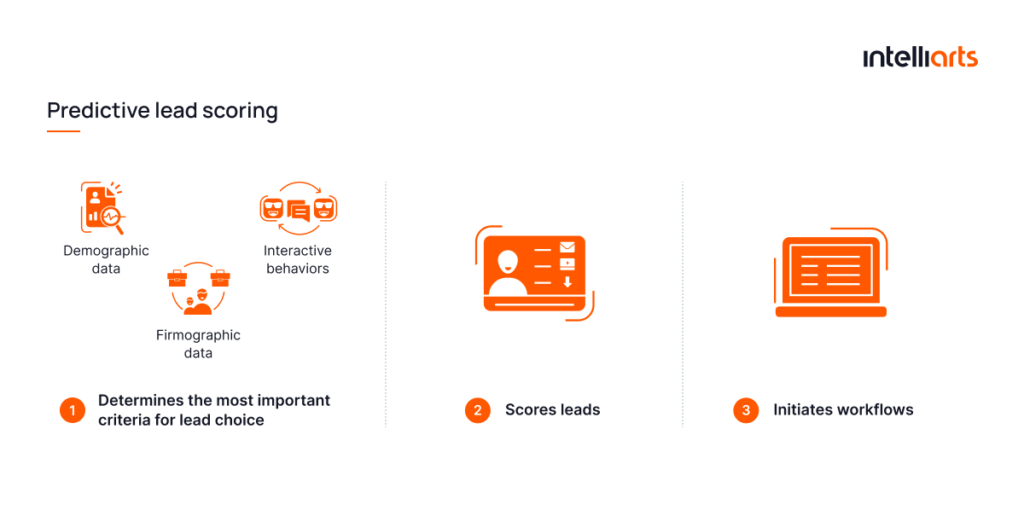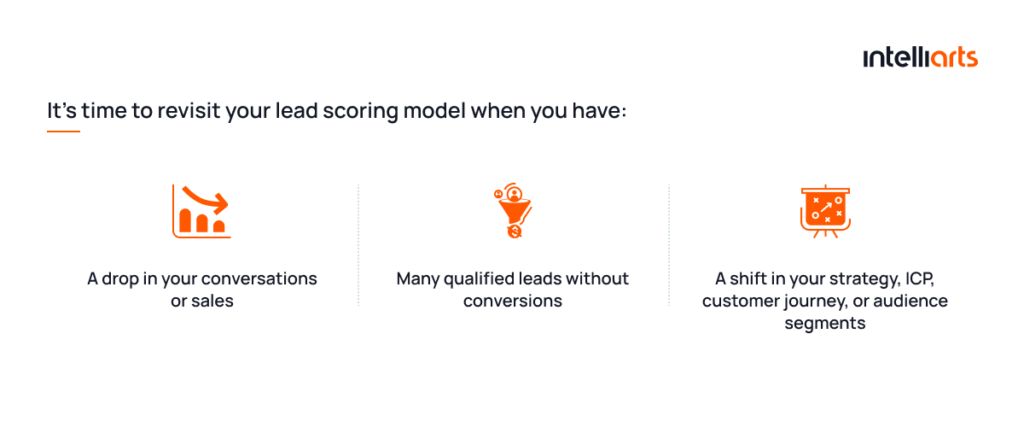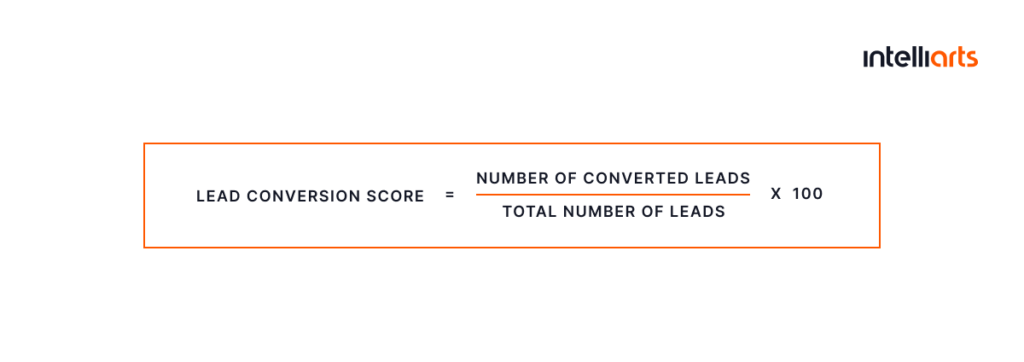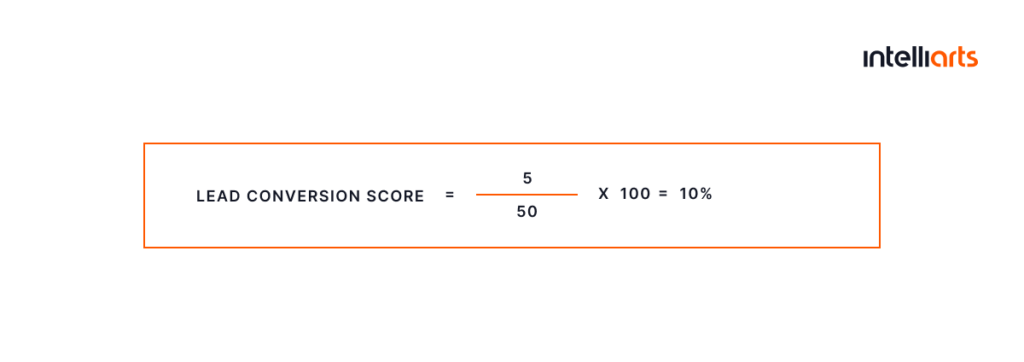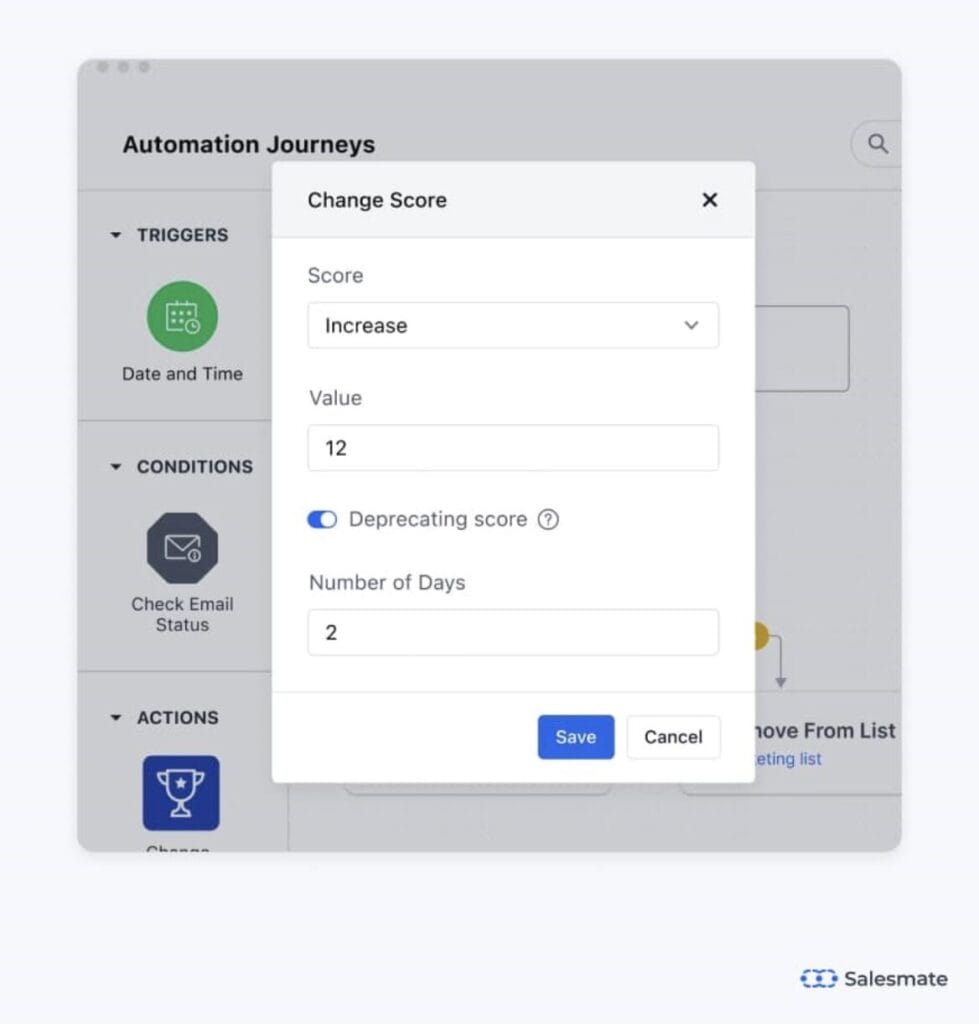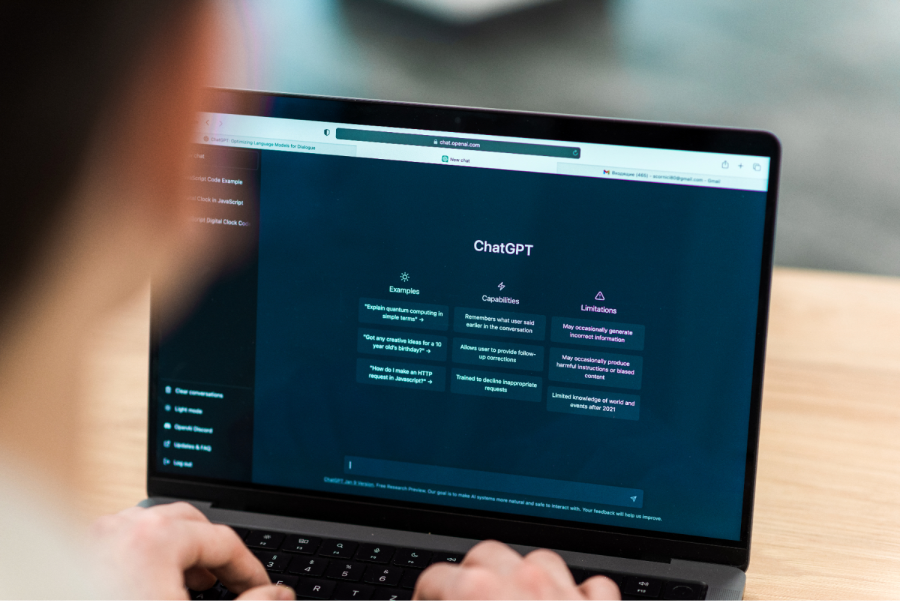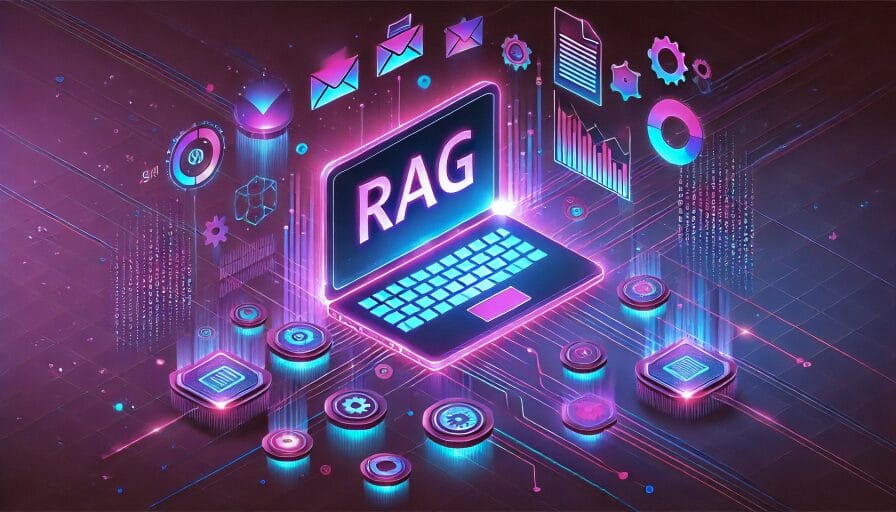Does it sound familiar to you: your marketing team produces plenty of leads on a regular basis, but the number of closed deals isn’t growing? Ineffective lead scoring could be the reason here.
Earlier, the Intelliarts team helped out the partner in the insurance industry to improve lead scoring by using technology. This allowed the company to cut off 6% of ineffective leads and increase the profit up to 2.5% in a few months. By using this example and other hands-on experience, we decided to cover 7 lead scoring best practices so you could stop wasting time on the leads with low conversion potential.
Understanding lead scoring
Lead scoring aims to filter out and identify leads who are most likely to make the purchase. This way, your sales team gets a chance to focus the effort on those most likely to convert.
Usually, lead scoring intends to assign a value to leads based on their behavior and/or interest in the product or service. This could be a numerical value (from 1 to 100) or simply categories like “hot” / “warm” / “cold”. As soon as the lead reaches a certain score defined by the team, a sales representative contacts them to close the deal.
Look at the simplistic example above just to catch the idea. And remember that different companies use different attributes to calculate the score — these parameters completely depend on what matters to you.
In modern sales and marketing strategies, lead scoring is a valuable tool to:
- Increase sales efficiency by timely responding to the most promising leads and ignoring those that are less likely to convert
- Improve company profitability as the result of more efficient sales — statistics say that companies that employ lead scoring achieve up to 70% increase in ROI as compared to those that don’t prioritize leads as part of their business model
- Understand your customers’ buying journey better to use these insights further in marketing and customer success
Top 7 lead scoring best practices
Now when we briefly explained what is lead scoring, we can move to B2B lead scoring best practices to get you covered:
1. Start small, scale up later
A popular mistake is to strive for the perfect lead scoring system, especially if it’s the first time for the company to set up lead scoring or you’re new to the process. This way, you risk getting caught up in the details, multiplying the criteria, only to find out that your lead scoring model doesn’t work. In the worst case scenario, it’s a few months after the hard work.
Instead, make a modest start and scale up gradually. You can choose from 5 to 10 most important attributes, e.g., number of website visits, downloads of white papers, registrations for webinars, etc. The idea is to keep your score as simple as possible to be able to adjust it easily.
2. Specify criteria for lead scoring
For more objectivity, you need to define lead scoring parameters based on which you will score the leads. Traditionally, we distinguish between explicit and implicit lead scoring:
- Explicit criteria deal with your external lead characteristics, usually demographic and firmographic data, e.g., company size, industry, geographic location, age, marital status, etc. These are easy to score — just compare the lead’s attributes to your ICP (Ideal Customer Profile).
- Implicit criteria evaluate the lead’s behaviors and interest in your product or service. Lead scoring examples in this case could include content downloads, website visits, social media engagement, purchase intents, etc. For sure, these are more difficult to track, yet they also show the leads that are more motivated to buy. Consider using lead scoring software that we mention below to help you monitor the data.
At the same time, when assessing leads’ behaviors, don’t limit yourself to positive scores only. Leads could stop interacting with your content or show unwanted behaviors like canceling appointments or visiting the career page. And it’s a good idea to mirror this in negative scoring.
Also, consider using repetitive scoring among other best practices with lead scoring to strengthen your parameters. Most businesses focus their score on one specific action like a person visiting the pricing page and getting 10 points. The truth is that repetitive actions could prove the lead’s bigger interest in your products or services, and it’s worth adding 10 points per each visit to the pricing page.
3. Establish thresholds and workflows to go
Having scores for each of your leads isn’t enough to make it work — you need thresholds to know when it’s time to act as well as workflows, i.e., clear instructions on what actions to take.
Thresholds are helpful to identify when leads require immediate reaction and when you still have time for nurturing. It’s also useful to sift through the leads and choose the most qualified ones to process first and ignore or leave for later those that are less likely to convert.
For example, you might determine that as soon as your lead achieves an 85 score, it’s qualified. So the sales team should contact the lead to close the deal. However, if the sales representative sees the lead with a 90 score, it reaches out to them first.
When assigning your threshold values, make sure you don’t make them too low. This way, your salespeople will spend too much time on the leads that aren’t sales-ready, causing high customer acquisition costs. Making thresholds too high is also bad since your company risks losing quality leads to competitors.
For better efficiency, we also recommend combining thresholds with workflows. For each threshold, prescribe an action plan for the sales and/or marketing team to know what to do. Check the example of a lead scoring workflow below.
4. Bring automation with predictive lead scoring
Manually setting up your lead scoring system is a good starting point, but it’s too time-consuming and troublesome to go. As soon as you’re ready to scale up, think about automation — and predictive lead scoring is the best way to achieve this.
Based on the user’s historical data, predictive lead scoring helps to calculate the score by matching the current leads with the ICP. It also uses machine learning algorithms to help the company predict the most motivated buyers. As a result, businesses benefit from:
- Automation and faster response to leads
- Reduced human error in lead processing
- Less time spent on lead scoring
- Real-time updates to lead profiles and, thus, more accurate results
- Ability to customize the model and include unique lead scoring criteria
- Better conversion rates
- The learning nature of predictive models — over time, the predictive lead scoring model can notice important patterns that push your leads to make the purchase
Of course, predictive lead scoring implementation has its nuances to consider. Here are 3 best practices shared by the
Intelliarts data experts after we completed lead scoring projects:
- Pay attention to data collection: the best types of data to collect are demographic and firmographic data, customer behavior data, and purchase history.
- Diversify data sources: consider using Google Analytics, CRMs, social media, website forms, industry reports and market research studies, data aggregators, third-party providers, web scraping and online data.
- Make it easier with personnel training: talk to agents about implementation plans, join the effort with ML engineers to organize employee workshops, and leave time for adaptation.
We’ve also just published a 20-page research paper on best practices for predictive lead scoring in insurance, where we summarized our experience in the industry. Get your copy to read about each of the mentioned best practices and discover 7 more.
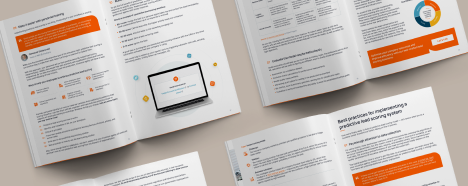
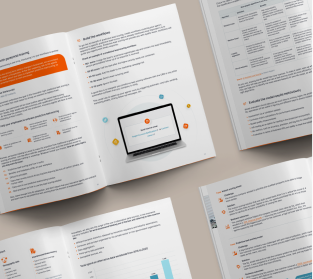
5. Align your sales with marketing
Marketing and sales departments complement each other. While marketing teams usually know where to look for leads and how to attract them with different marketing materials, salespeople work with your leads directly and can provide unique insights into their behaviors and preferences.
So what could your sales reps shed light on? Different trends and patterns that work (and don’t work) like the main pain points of your prospects and how they attempt to solve these. Also, the information about demographics, decision-making process, and industry insights that can turn into opportunities for the pipeline.
So no wonder that companies where sales and marketing teams work in sync show 67% better efficiency in closing deals. If you’re wondering how to bring this idea to life, here’s hands-on advice for sales marketing alignment: start with bi-weekly pipeline reviews performed by the sales and marketing teams. Later, you can carry these out once a month and involve the heads of the departments only.
6. Get more insights from customers
Another way to improve your lead scoring process is to talk to your existing customers and discuss why and how they decided to partner with you. Create a survey, send them an email, or, much better, schedule a call with them to collect more information on:
- Their demographic and firmographic data to contrast with your ICP
- Their behaviors, preferences, and business needs
- What incited customers to convert and what repelled them from doing this
- What specific activities and/or content assisted them in their decision-making process
Needless to say, customers may describe their sales experience in a different way as compared to your salespeople. It’s a good idea to listen to both sides to discover more about decision making. Also, make sure to interview both types of customers — those engaged in the shorter and longer sales cycles to get a fuller picture.
7. Optimize the model regularly
Your lead scoring model shouldn’t be set in stone. Instead, it’s better to continuously monitor, update, and refine your lead scoring. As your business grows and changes over time, so should lead scoring. For example, you can introduce a marketing channel to your campaign and start converting more leads from there. Or shifts could happen in your audience segments, customer journey, or market fluctuations. Remember how B2B businesses had to move most of their marketing activities online because of the rise of the COVID-19 pandemic?
All of this is to be reflected in your lead scoring strategy for better results. Make your model as flexible and dynamic as possible. And again, the best way to do this is to involve emerging technologies. With predictive lead scoring, you can set up monitoring dashboards and track the results efficiently. Revising predictive lead scoring models is easier too as you don’t have to recalculate everything and make changes manually.
How to calculate a lead score?
Regardless of whether you choose to calculate a lead score manually or use some software, here is how to do it right:
This formula will help you know the percentage of leads that have converted and, thus, evaluate the performance of your marketing campaigns. Let’s say you had 50 leads and 5 of them became your customers. Your lead score is 10%:
6 software solutions for lead scoring
To speed up the process, you can also involve ready-made lead scoring software available in the market. Here are some of the most popular ones to consider:
Salesforce

Source: help.salesforce.com
Salesforce is a great tool that offers both manual and automated lead scoring. For manual lead scoring, users need to create a new score field and then set up an actual scoring mechanism by using the existing Salesforce properties, such as industry, emails opened, etc.
Another option is to use the so-called Einstein Lead Scoring, the tool for predictive lead scoring in Salesforce. Using machine learning algorithms, this feature:
- analyzes past leads to see what they have in common with the current leads for more conversions
- has internal categories for specific lead text fields that have different values but share similar meanings like different job titles for the same job
- reanalyzes lead data every 10 days and refreshes the score
Freshsales
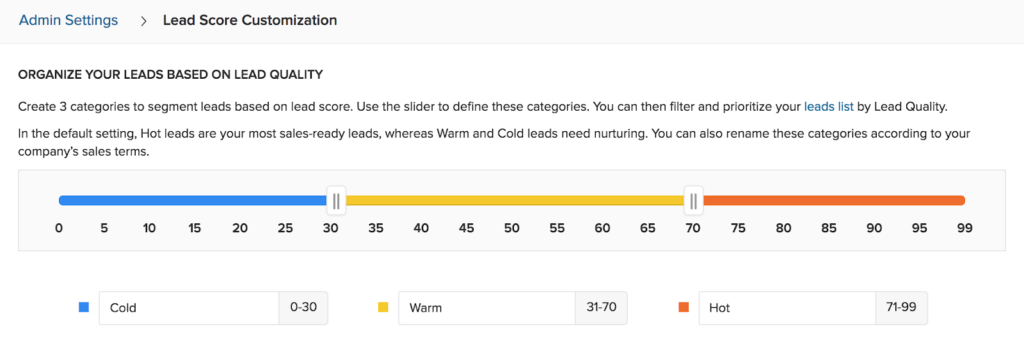
Source: https://www.freshworks.com/crm/sales/
If you want something simpler (and cheaper), Freshsales is another solution to prioritize your leads. The tool gives 4 options for lead scoring: by properties, email activity, web activity, and application activity.
Besides, users can assign points to leads that align with their buyer persona to ensure they focus on the most relevant prospects. Respectively, deducting points is also possible if the lead doesn’t meet the qualification criteria.
LeadSquared Sales
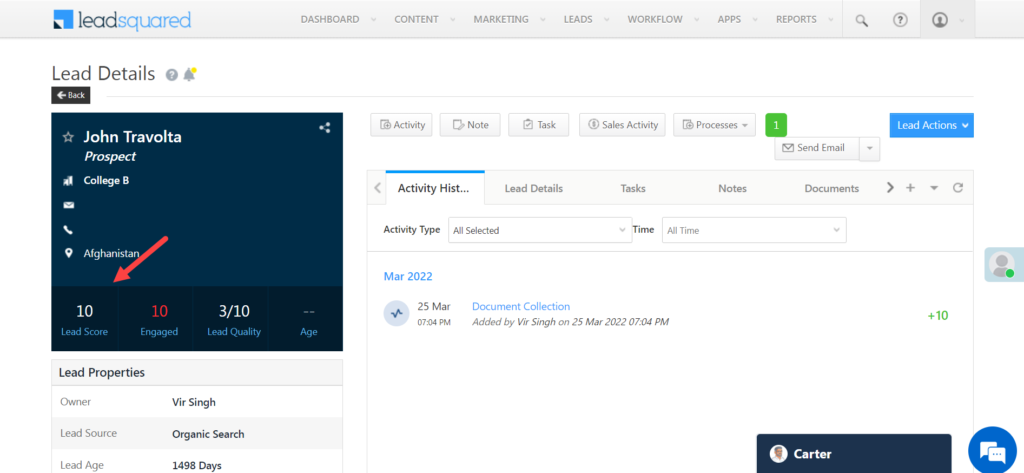
Source: help.leadsquared.com
One more alternative includes LeadSquared Sales. The tool provides a number of default criteria based on which users can rate their leads and which are the most common across industries. Some examples are website visits, phone calls, emails opened, etc.
Also, you can add custom criteria or activities, as it’s called in LeadSquared. This feature enables users to set up and assign scores to new activities that are unique to your industry.
Hubspot

Source: hubspot.com/products/lead-scoring
It’s unlikely that you haven’t heard of Hubspot. So if you’re looking for quality, it’s a good option in lead scoring. Hubspot also offers both manual and automated lead scoring that help users prioritize leads based on thousands of data points. With Hubspot’s automated lead scoring, you:
- Leverage data points gathered through the entire customer journey to assess and assign lead scores
- Create an intelligent system that learns over time and self-optimizes lead scoring
- Scale your lead scoring system along with your business growth — in Hubspot, users can build up to 25 different lead scoring systems
- Combine traditional and predictive lead scoring
ActiveCampaign
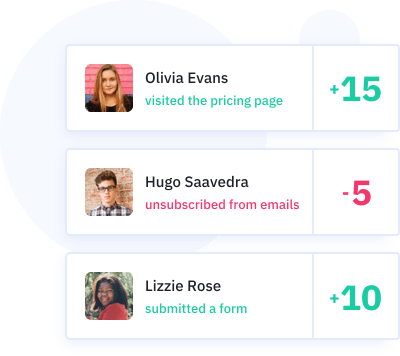
Source: activecampaign.com/sales-crm/lead-scoring
In case you’re looking for a more straightforward tool, with a shorter learning curve, ActiveCampaign seems more suitable here. The tool sends email notifications when leads “get hotter” and allows assigning tasks based on lead score changes, for example, to send follow-up emails timely.
An unusual feature is an opportunity to assign scores both to individual contacts and overall deals, so the sales team could get insights into the likelihood of the sales efficiency — even if the primary contact has changed.
Ready-to-use software can save you time, but it’s inefficient and expensive in the long term. Think about custom solutions for predictive lead scoring, which will grant you with:
- Much better performance as these are designed specifically for your company and industry. For instance, custom lead scoring models are trained using your customer data and can include or exclude unique criteria that are important to your business
- Higher accuracy of results since custom lead scoring models are optimized for one specific task as compared to off-the-shelf solutions, which are usually designed to perform different sales and marketing functions at once
- Lack of limitations, such as in types of data or input formats. Tailored to your business needs, custom-trained models won’t struggle to grasp the nuances of industry-unique jargon or slang, which is a common problem for generic lead scoring software
- Flexibility — in case your business grows and changes or new data appears, custom lead scoring models can be updated and/or retrained easily
Salesmate
Salesmate is a powerful lead generation CRM software and lead scoring tool that helps businesses streamline their sales and marketing processes. Its robust lead scoring feature enables sales teams to prioritize leads based on behavior, engagement, and other criteria.
With customizable scoring models and automated lead scoring, Salesmate ensures that your team focuses on high-potential leads, boosting sales efficiency. With this tool, a user can:
- Customize lead scoring models tailored to your business needs.
- Automate scoring based on historical data and behavioral insights.
- Seamlessly integrate with various marketing automation tools to create a cohesive, data-driven system for more efficient lead management.
How Intelliarts can help you with lead scoring?
In today’s dynamic business environment, lead scoring stands out as a crucial tool for organizations to prioritize and convert potential leads into customers. As a provider of custom machine learning solutions, Intelliarts can help you strengthen lead scoring by adding data-driven insights, behavioral analytics, and automation for more accurate predictions.
We build end-to-end predictive lead scoring that helps businesses sift through the leads and provide a steady stream of qualified leads to your sales team. If you’re planning to introduce predictive lead scoring (or any other ML-related project) to your value chain, feel free to book a consultation with our expert team. We’ll be glad to translate your business idea into action.
FAQ
1. What makes a good lead scoring model?
A good lead scoring model has a well-defined set of criteria that accurately reflects a lead’s potential to convert. These usually combine demographic and behavioral factors. Regular refinement based on feedback and evolving customer behavior further contributes to the effectiveness of a lead scoring model and your sales lead quality.
2. How do you optimize lead scoring?
If you want to optimize lead scoring, consider incorporating advanced analytics, dynamic scoring, the use of A/B testing, alignment with business goals, automation and technology integration.
3. How do you create a scoring method?
To create a scoring method, identify key criteria for lead scoring, such as demographic details, engagement behavior, and lead source relevance. Then assign numerical values to these criteria based on their importance and sum up the score to get a total.
